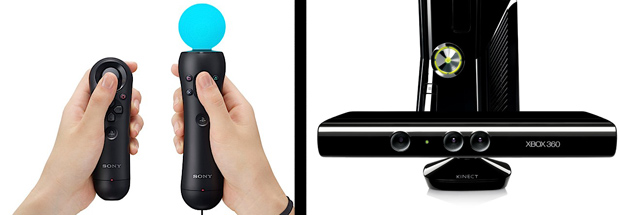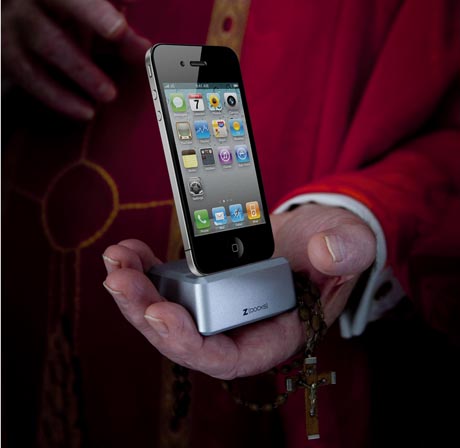
E3, the mega-conference where next year's video games are unveiled for the press, has concluded. Microsoft and Sony are both turning to Wii-like motion controllers as a way to extend the life of video game consoles, and each revealed new games and hardware. Now that the dust has settled from the showdown, which platform came out the winner from the game extravaganza?
Sony Games’ presentation hyped Move, a more precise and ergonomic version of the Wii-mote controls. On display was a mix was of “hardcore” genres (Socom, Sorcery), more mainstream (Tiger Woods), and casual titles (EyePet). Unfortunately, there just wasn't a wide enough assortment of games to fully demonstrate the power of the new technology.
Microsoft Games on the other hand, went right for the mainstream with its motion-control system, Kinect. They showed off minigame titles (Kinect Adventures), fitness games (Your Shape), and casual experiences (Kinectimals). Kinect feels unique, unlike anything else on the market--even if it uses a camera similar to the PlayStation Eye. Your Shape really captures yoga and analyzes the angles of your limbs as you bend and stretch. And while there is a tiny delay in the games’ reactions to your movement, good game design should effectively make up for it.
In the end, it is a tie when it came to games: Sony’s precision and mix of titles stood toe-to-toe against Microsoft’s more casual, but unique approach. Ben Feder, CEO of game publisher Take-Two said, “Move is exciting for us because its really got a fine motor control that we can utilize, especially in basketball. Kinect is exciting because no controller required--the dance game they have out, the exercise games they have out, are awesome. From a third-party perspective, it’s all complementary. It’s not one versus the other--it's all opportunity for us.” Electronic Arts, true to their roots as a platform agnostic publisher, dipped its toe into both systems, with Tiger Woods for Move and EA Sports Active for Kinect.
But an informal survey of games being demonstrated by third-party publishers, indicated there are many more Kinect games in development. From Konami (Dance Masters, Adrenalin Misfits), to Sega (Sonic AirRiders), to WB (Game Party in Motion), to Ubisoft (Your Shape, Sports Motion) all seemed to favor Microsoft's technology. Perhaps Kinect’s interface wins publishers' hearts. As I controlled the Xbox through gestures and voice, it felt like the future. And video chat in the living room could be a game changer. I believe Microsoft is edging out Sony so far. Of course, without a confirmed price for Kinect, a possibly high price may shift interest.
Of course, E3 wasn’t just about motion controls. Sony’s embrace of gaming on 3-D televisions (Killzone and Gran Turismo) was a step forward for the industry. And despite the wealth of great games on offer, the game industry gets particularly revved-up over new hardware, in which case maybe both companies lost out entirely to the Nintendo 3DS.
Sony Video Games Accessories
Microsoft Video Games Accessories
Source of the blog: fastcompany








